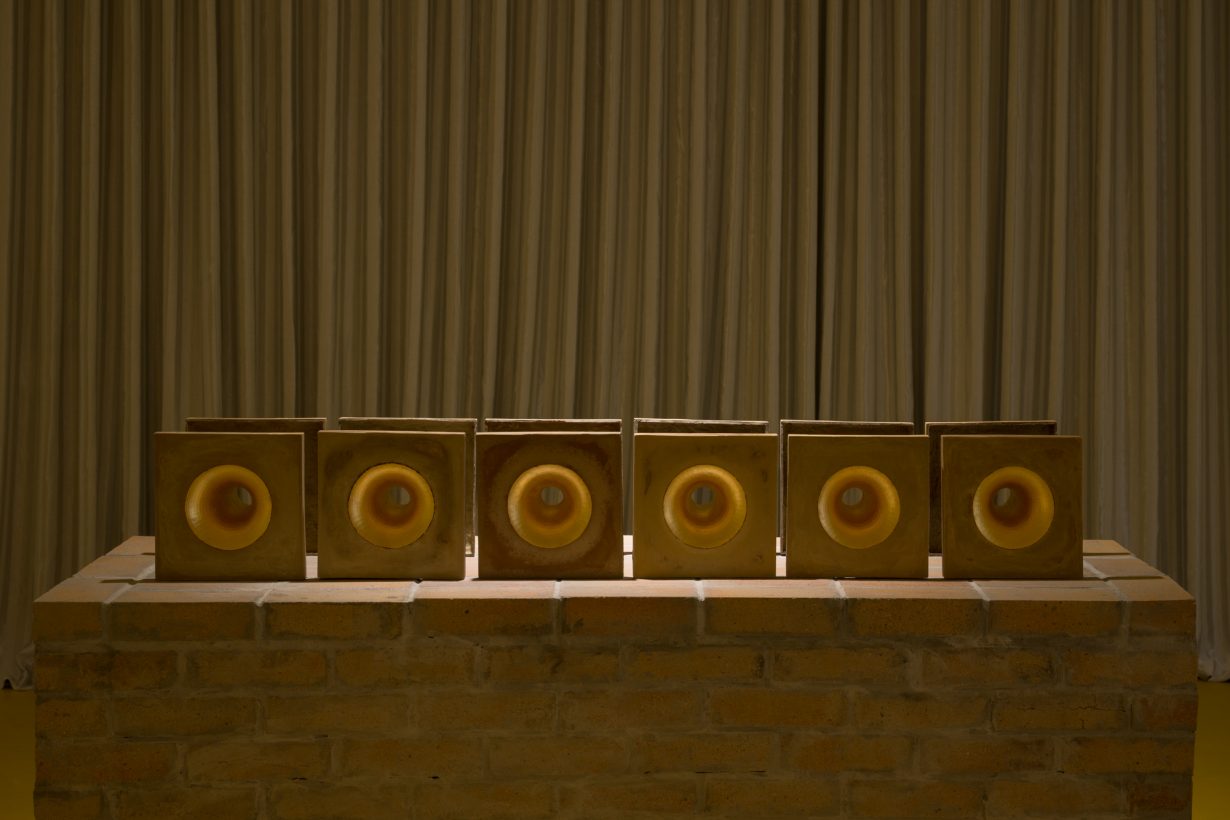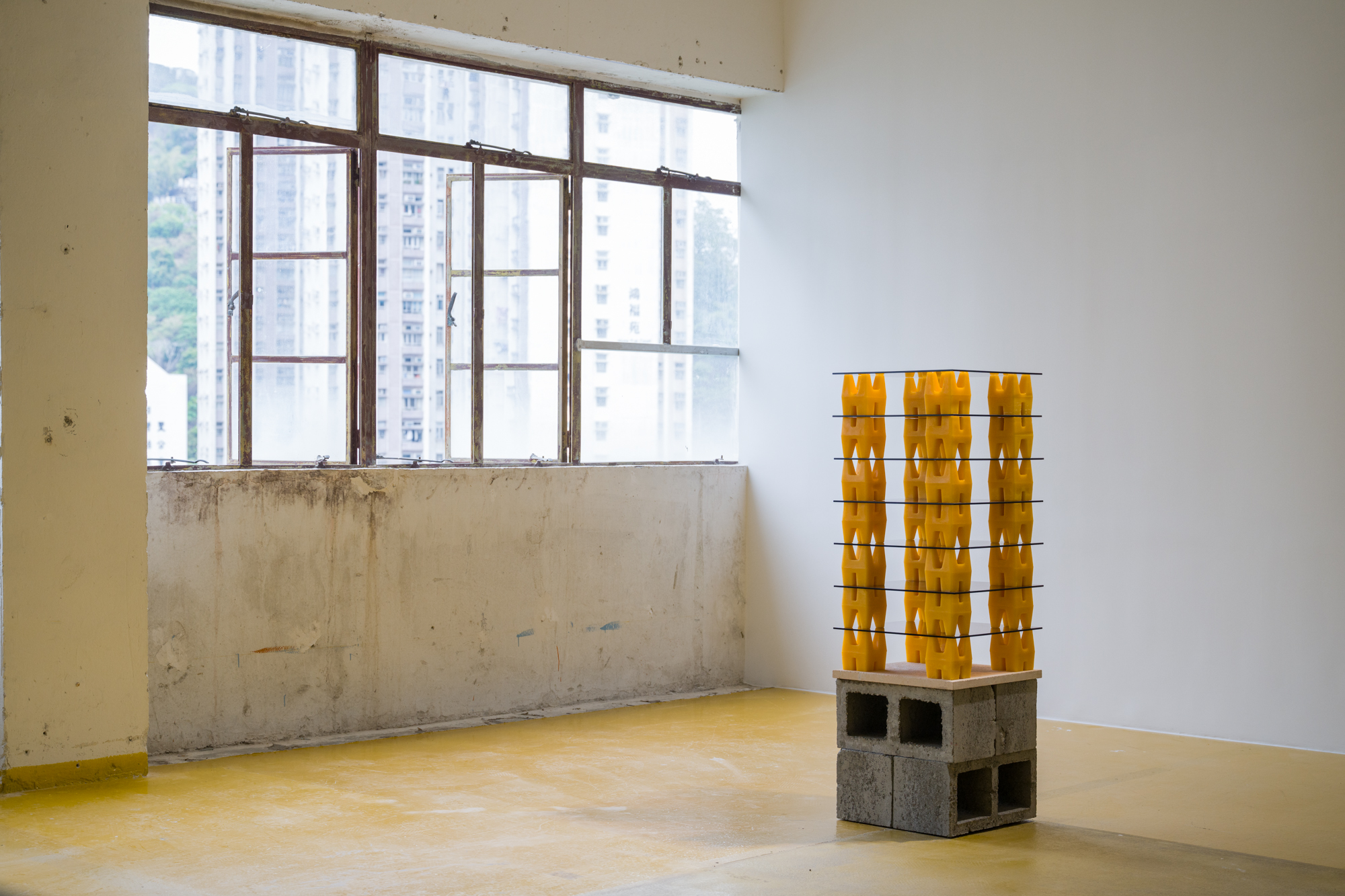For the Hong Kong artist, metaphysical structures can be reimagined in art as escape routes
Though conceived as theoretical solutions to Einstein’s field equations used in his theory of general relativity, wormholes serve as apt metaphors for numerous concepts illustrating routes, shortcuts and points of connection between disparate entities. For Hong Kong artist Tap Chan, these metaphysical structures are also reimagined as escape routes. Featuring nine new bodies of work, including sculptures, photographs and a video, the show largely builds on her longstanding fascination with wormholes as a mechanism for time travel, which she now fuses with reflections on migration, diaspora and home, transforming their function into a potential exit strategy.
Perhaps no other work better encapsulates Chan’s practice, through which abstract notions manifest themselves in the artist’s signature minimalist sculptural aesthetic, than Their Sun: Our Sun (2024). Set up in the first half of the space, against the backdrop of a grey curtain that divides the room in two, the striking installation features a set of six gold-toned sculptures mimicking the tunnellike shape of wormholes, placed side by side atop a brick platform. The outer shells of the sculptures are composed of an iron-mineral composite with a raw finish, which encases a refined 24K gold-plated tunnel interior. Here the artist imagines what the inside of a wormhole might hold: a place in which time supposedly stands still. The title draws from a Chinese saying conveying that the moon is rounder and the grass golder – to use the aesthetics of Chan’s sculpture – abroad, both prompting the desire to leave home.
Illusory notions and visuals also find their way into Turbulence Field (2025), a small floor-based sculpture materialising what it might feel like to experience a wormhole. In what seems to be a depiction of the cosmos, a spherical lightbulb is half-consumed by a churning black substance that appears to be artificial material but turns out to consist of bamboo charcoal with metallic tones from ground seashells. A single bird’s feather attached to a rod is hoisted above the dark platform in one corner and moves according to the vibrations generated as viewers walk by the work, often changing directions, as if animated by a sense of confusion.

Both Hong Kong Island’s natural and manmade landscape are reflected in the sculptures on the other side of the curtain, juxtaposed against the view of Aberdeen’s greenery and the Tin Wan housing estate through the space’s large windows. Liquid Memory (2025) is a pseudo-fountain installation with green trays, the shape and arrangement of which recall the island’s mountainous terrain. The trays are placed at various heights on a modular cubic structure made from steel rods and are connected by pipes that carry water drawn from a singular source at the bottom of the structure, referencing cycles of water through earth and time. The housing estate serves as inspiration for Chan’s sculpture Where there is Honey, there is Home (2025), a stack of seven tinted-glass sheets held up by four-pointed blocks made from beeswax, moulds of those used at construction sites that are crucial to establishing foundations. The glass mirrors the blocks as well as the view outside, suggesting a sense of infinity. Moreover, the honey-hued beeswax matches the distinct yellow floors of the former industrial storage facility in which Mou Projects is currently based. Faintly imprinted marks on the floor, dating from the space’s former occupants, brings to mind a laid-out route, instructing one how to navigate till they reach the exit.
Chan’s reflections on her own home, Hong Kong, in the second half of the space localise and personalise her proposition of wormholes as a potential escape route or shortcut in the first. And collectively they allow her to play with definitions of home, from the literal, physical abode to that of the cosmos at large. In Hong Kong, and the world at large, it often seems as if change is the only constant, and consequently the desire to leave or remain is constantly in flux. As is, Chan suggests, the feeling of belonging.
Fabric of Belonging at Mou Projects, Hong Kong, 22 March – 3 May
From the Summer 2025 issue of ArtReview Asia – get your copy.
